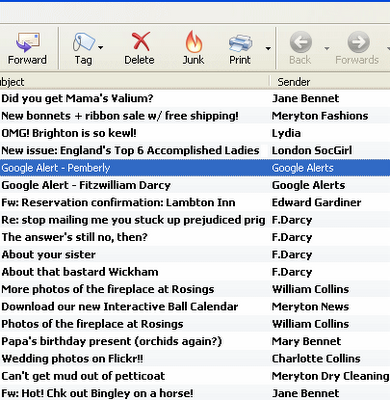Kristine Hughes's Blog, page 167
December 6, 2010
A Hunting We Will Go
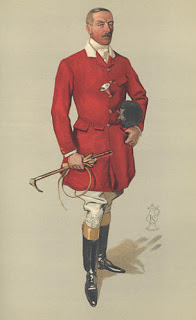
Modern day controversy aside, there's still no more iconic image of the English Gentleman than those like the one shown above - dressed in "pinks" and ready to join the fox hunt or to go riding to hounds. The Duke of Wellington did it, though he wore a light blue jacket, and the present Duke of Rutland is known for his Belvoir Hunt. But what, in this day and age, is the actual cost of kitting oneself out for the hunt?
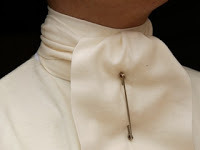 Plain cream silk stock - £35.00
Plain cream silk stock - £35.00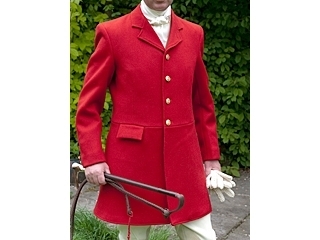
Frock style hungting coat £430.00
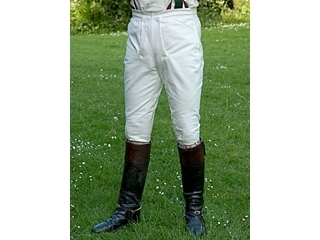
Bespoke molesking breeches £165.00
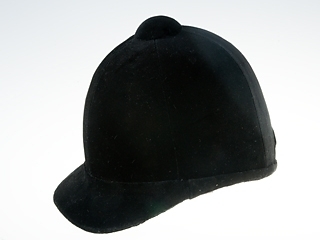
Bespoke hunting cap £275.00
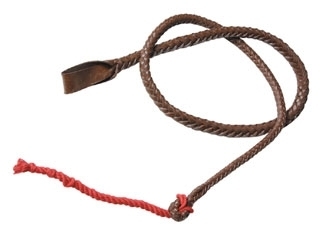
Hunting whip £45.00
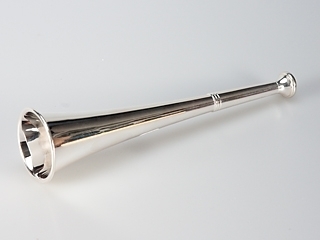 Silver hunting horn £698.00
Silver hunting horn £698.00 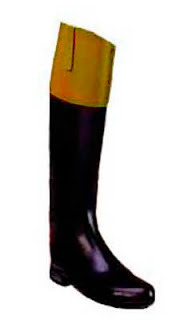
Hunting boots approximately £450.00
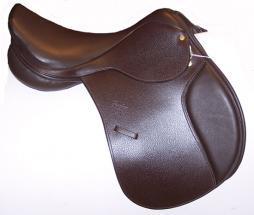
Saddle approximately £1,000.00
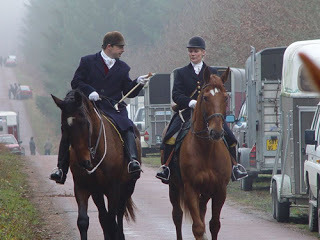
A decent mount approximately £5,000.00
Total approximate cost - £8,098.00
Or $12,944.37, excluding shirt, gloves, socks, bridle, spurs, hounds, rifle or flask
Published on December 06, 2010 01:42
December 5, 2010
Christmas at Castle Howard, Yorkshire
 Saturday's Snow update: The roads to Castle Howard are open, but please drive with care. The House & Gardens, Stable Courtyard Shops, Farm Shop, Café and Garden Centre are open for business as usual from 10am daily, and 'Audiences with Father Christmas' will go ahead as scheduled this weekend. The snow covered gardens look stunning - so please wrap up, enjoy the views and have fun! Updated 4.00pm on 03/12/2010.Check the Castle Howard website for daily updates here.
Saturday's Snow update: The roads to Castle Howard are open, but please drive with care. The House & Gardens, Stable Courtyard Shops, Farm Shop, Café and Garden Centre are open for business as usual from 10am daily, and 'Audiences with Father Christmas' will go ahead as scheduled this weekend. The snow covered gardens look stunning - so please wrap up, enjoy the views and have fun! Updated 4.00pm on 03/12/2010.Check the Castle Howard website for daily updates here. Hurrah! All those lovely decorations and planned events no longer postponed! Unless we live in a tropical climate, we expect snow in December, but I reckon the current situation in Europe is more than anyone expected. If you are anywhere near Yorkshire, check the website and plan a Christmas visit to the Castle. Many events are planned, some already sold out.
Hurrah! All those lovely decorations and planned events no longer postponed! Unless we live in a tropical climate, we expect snow in December, but I reckon the current situation in Europe is more than anyone expected. If you are anywhere near Yorkshire, check the website and plan a Christmas visit to the Castle. Many events are planned, some already sold out.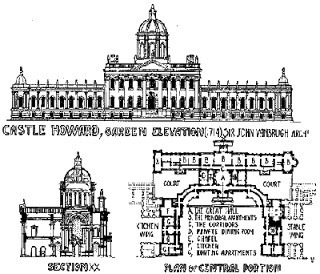 Castle Howard is the spectacular estate belonging to the Howard family, Earls of Carlisle, built in the early 18th century in the baroque style by Sir John Vanbrugh and Nicholas Hawksmoor. The building of Castle Howard is the story of unique friendships. Under history in the website above you can learn about the trio of Charles Howard, 3rd Earl of Carlisle (c.1669-1738), John Vanbrugh (1664-1726) and Nicolas Hawksmoor (1661-1736), who cooperated to build this remarkable house.
Castle Howard is the spectacular estate belonging to the Howard family, Earls of Carlisle, built in the early 18th century in the baroque style by Sir John Vanbrugh and Nicholas Hawksmoor. The building of Castle Howard is the story of unique friendships. Under history in the website above you can learn about the trio of Charles Howard, 3rd Earl of Carlisle (c.1669-1738), John Vanbrugh (1664-1726) and Nicolas Hawksmoor (1661-1736), who cooperated to build this remarkable house.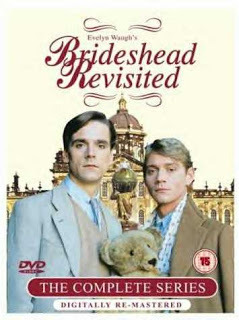 You may be familiar with it as the setting of the television series Brideshead Revisited. Both the 1981 eleven-episode version starring Anthony Andrews and Jeremy Irons and the 2008 film of the same name (if you are interested, definitely choose the former). Castle Howard also served as one of the settings for The Buccaneers, a five-episode miniseries in 1995 of Edith Wharton's last unfinished novel about American heiresses looking for English titles. More film appearances are detailed on the website.
You may be familiar with it as the setting of the television series Brideshead Revisited. Both the 1981 eleven-episode version starring Anthony Andrews and Jeremy Irons and the 2008 film of the same name (if you are interested, definitely choose the former). Castle Howard also served as one of the settings for The Buccaneers, a five-episode miniseries in 1995 of Edith Wharton's last unfinished novel about American heiresses looking for English titles. More film appearances are detailed on the website.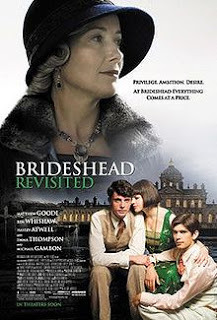
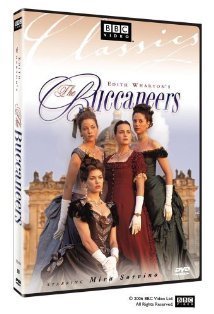
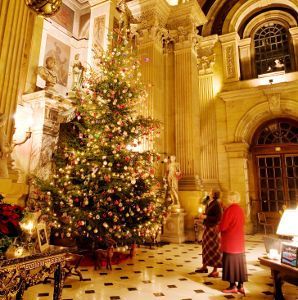 Christmas in the Great Hall
Christmas in the Great Hall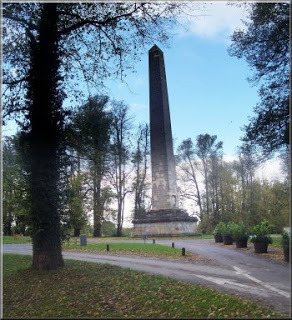 Castle Howard replaced the nearby Henderskelfe Castle, the ancient Yorkshire seat of the Dacre family from which the Howards are descended. This castle was destroyed by fire in 1693; today a large obelisk marks its former location. The third Earl at the end of the 17th century, decided to bult a great house, and first chose William Talman (1650-1719), the architect who was redoing Chatsworth for the Duke of Devonshire. But they didn't get along.
Castle Howard replaced the nearby Henderskelfe Castle, the ancient Yorkshire seat of the Dacre family from which the Howards are descended. This castle was destroyed by fire in 1693; today a large obelisk marks its former location. The third Earl at the end of the 17th century, decided to bult a great house, and first chose William Talman (1650-1719), the architect who was redoing Chatsworth for the Duke of Devonshire. But they didn't get along. 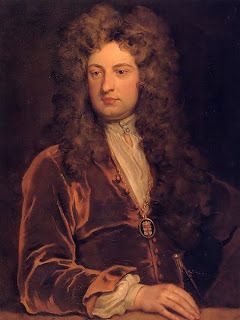
The Earl turned to John Vanbrugh (1664-1726), a multitalented fellow, a former soldier, whose very first play was a success. He was an amateur architect, more familiar with theatrical design, but he was able to work closely with Nicholas Hawksmoor (c.1661-1736), a professional who was an assistant to Wren and, alone, the architect of several noteworthy buildings. The partnership worked so well it was continued in the building of Blenheim.
 Castle Howard spreads out under a lanterned dome, perhaps inspired by the recent erection of Wren's St. Paul's. The dome was not part of the architect's original drawings. Work on the house continued until Vanbrugh's death in 1726. The planned west wing was not built until the 1750's and then to plans altered by architect William Kent.
Castle Howard spreads out under a lanterned dome, perhaps inspired by the recent erection of Wren's St. Paul's. The dome was not part of the architect's original drawings. Work on the house continued until Vanbrugh's death in 1726. The planned west wing was not built until the 1750's and then to plans altered by architect William Kent.
Nigel Nicolson writes of Castle Howard in the National Trust Book of Great Houses of Britain, "From a distance it passes every test; it is noble, dramatic, splendid and in scale. From a closer view, there is almost nothing in British architecture to match the explosive vigour of its soaring stone...the minds of several great men have met here to create what is without question the finest memorial to the short-lived age of the English baroque."
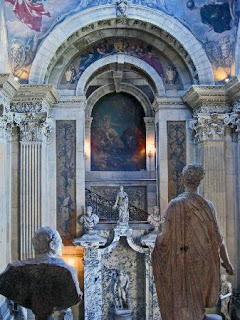 Chapel Frederick Howard, 5th Earl of Carlisle (1748-1825) went on the Grand Tour with Charles James Fox, then held a number of royal appointments. At 30, he became the Chief Commissioner to North America on the eve of the Revolution, and later was Lord Lieutenant of Ireland. He acquired many fine Italian paintings now in the house.
Chapel Frederick Howard, 5th Earl of Carlisle (1748-1825) went on the Grand Tour with Charles James Fox, then held a number of royal appointments. At 30, he became the Chief Commissioner to North America on the eve of the Revolution, and later was Lord Lieutenant of Ireland. He acquired many fine Italian paintings now in the house.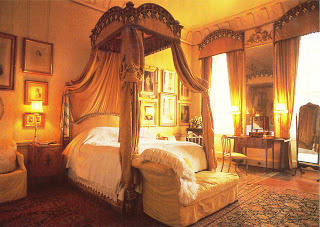
His son, George Howard, 6th Earl of Carlisle (1773-1848), married Georgiana Cavendish, daughter of the 5th Duke and Georgiana, Duchess of Devonshire. Lady Georgiana's bedroom has been preserved as it was at her death in 1858 with its 18th century furniture intact.
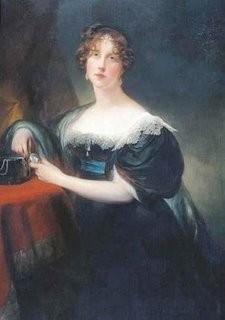 Despite her fragile beauty, Lady Georgiana bore the 6th Earl a dozen children, 6 boys and 6 girls.
Despite her fragile beauty, Lady Georgiana bore the 6th Earl a dozen children, 6 boys and 6 girls. Upon the death of the 9th Earl of Carlisle in 1911, the family estates were divided. The 10th Earl inherited Naworth Castle, Cumbria, and Castle Howard went to Hon. Geoffrey William Algernon Howard (1877-1935). His grandsons are now the trustees of the corporation that owns and operates Castle Howard. It's worth noting that the Howards are the only great Catholic medieval family to survive to present day.
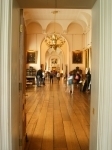 During World War II, the house was used as a girl's school. During the school's tenure, a fire destroyed the south wing and the central great hall and dome. The dome and Great Hall were restored but the interiors of one wing of the house are empty. These rooms, stripped to their unadorned brick walls, once held the major State Rooms, now all gone. In other areas of the house, many fine rooms are open to the visitor.
During World War II, the house was used as a girl's school. During the school's tenure, a fire destroyed the south wing and the central great hall and dome. The dome and Great Hall were restored but the interiors of one wing of the house are empty. These rooms, stripped to their unadorned brick walls, once held the major State Rooms, now all gone. In other areas of the house, many fine rooms are open to the visitor.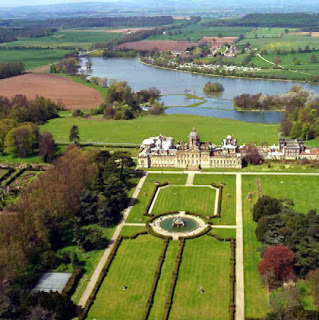 The park and the buildings scattered around the grounds, the Temple of the Four Winds by Vanbrugh and the Mausoleum by Hawksmoor, and the handsome bridge are as admired as the house itself.
The park and the buildings scattered around the grounds, the Temple of the Four Winds by Vanbrugh and the Mausoleum by Hawksmoor, and the handsome bridge are as admired as the house itself.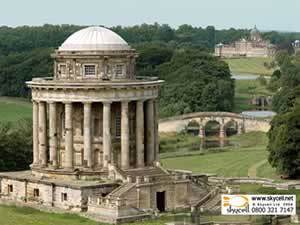 The Temple of the Four Winds, last work of Vanbrugh
The Temple of the Four Winds, last work of Vanbrugh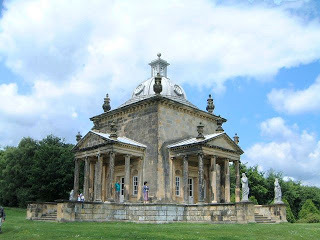 The Mausoleum, by Hawksmoor
The Mausoleum, by Hawksmoor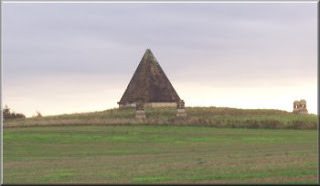 Hawksmoor's Pyramid
Hawksmoor's Pyramid
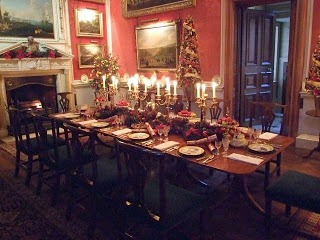 We hope that the snow does not cause anyone to miss Christmas Dinner at Castle Howard.
We hope that the snow does not cause anyone to miss Christmas Dinner at Castle Howard.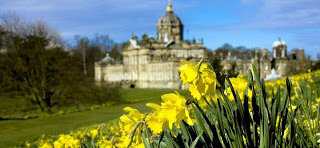 But one thing is sure -- next spring the daffodils will bloom again in Yorkshire.
But one thing is sure -- next spring the daffodils will bloom again in Yorkshire.
Published on December 05, 2010 02:00
December 4, 2010
Those Fabulous Phaetons - Part Two
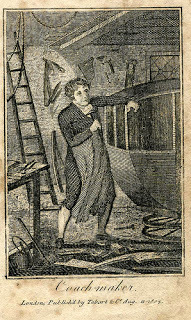 The area in and around Long Acre in London was noted for it's many coach builders, who offered standard coach designs and could also make customized carriages to suit any need or taste. Rudolph Ackermann, most famous for his "Repository," designed many coaches for the aristocracy. The delivery of a finished coach happened long after its initial order had been placed, as there many firms involved in the construction and outfitting of each. No one firm undertook all phases of the process. There were the Body Makers who made the body and panels, Carriage Makers who built the under-carriage, Blacksmiths who did all the iron work, Wheelwrights and Curriers, who fitted the seats and all leather parts. Finally, Painters attended to the coach bodies and heraldic designs upon the doors and the Trimmers fitted up the interior with lace edgings for pockets, tassel cords, hammer cloths and window blinds. Quality work produced by skilled craftsmen took time - but those Fabulous Phaetons were well worth the wait.
The area in and around Long Acre in London was noted for it's many coach builders, who offered standard coach designs and could also make customized carriages to suit any need or taste. Rudolph Ackermann, most famous for his "Repository," designed many coaches for the aristocracy. The delivery of a finished coach happened long after its initial order had been placed, as there many firms involved in the construction and outfitting of each. No one firm undertook all phases of the process. There were the Body Makers who made the body and panels, Carriage Makers who built the under-carriage, Blacksmiths who did all the iron work, Wheelwrights and Curriers, who fitted the seats and all leather parts. Finally, Painters attended to the coach bodies and heraldic designs upon the doors and the Trimmers fitted up the interior with lace edgings for pockets, tassel cords, hammer cloths and window blinds. Quality work produced by skilled craftsmen took time - but those Fabulous Phaetons were well worth the wait.Charles Dickens gives us details of the process is All the Year Round:
The coachmaker's wood-loft contains oak, ash, and elm, from trees which have lain a year after falling, and which, after I.-mis; cut into planks of various thicknesses, must remain unused as many years as they are inches thick. A certain class of carriage-builders use green wood of any quality, relying on paint to cover all defects, not expecting or caring to see any customer twice. There are some advertising fabricators of diminutive Broughams who are especially to be avoided.
Besides European woods, there is also a large demand for mahogany and knee-wood from the Gulf of Mexico, Quebec pine, birch and ash from. Canada, tulip-wood and hickory from the United States. These, for the most part, are cut ready for use by steam saws before going into the hands of the coachbuilder.
 The first step for the construction of, say a Brougham, is to make a chalk drawing on a brick wall, of the same size. On this design depends the style of the carriage. Some builders are happy or unhappy in designing novelties; others have a traditional design, a certain characteristic outline, from which they will on no consideration depart. The next step is to make patterns of the various parts. In first-class factories, each skilled workman has been apprenticed to, and follows only one branch of, the trade. The leading workmen in wood are body-makers, carriagebuilders, wheelers, and joiners—all highly skilled artisans, as may be judged from the fact that a chest of their tools is worth as much as thirty pounds.
The first step for the construction of, say a Brougham, is to make a chalk drawing on a brick wall, of the same size. On this design depends the style of the carriage. Some builders are happy or unhappy in designing novelties; others have a traditional design, a certain characteristic outline, from which they will on no consideration depart. The next step is to make patterns of the various parts. In first-class factories, each skilled workman has been apprenticed to, and follows only one branch of, the trade. The leading workmen in wood are body-makers, carriagebuilders, wheelers, and joiners—all highly skilled artisans, as may be judged from the fact that a chest of their tools is worth as much as thirty pounds.The framework is sawn out of English oak. The pieces, when cut by the band-saws, are worked up, rabbeted, and grooved to receive the panels, and thus a skeleton is raised ready for the smith and fitter, who, taking mild steel or homogenous iron, forge and fit a stiff plate along the inside cart-bottom framework, following the various curves, and bolted on so as to form a sort of backbone to the carriage, which, takes the place of the perch:—universally the foundation of four-wheeled carriages before the general adoption of iron and steel.
The frame is then covered with thin panels of mahogany, blocked, canvased, and the whole rounded off. After a few coats of priming, the upper part is covered with the skin of an ox, pulled over wet. This tightens itself in drying, and makes the whole construction as taut as a drum-head, the joints impervious to rain, and unaffected by the extremes of heat or cold. Meanwhile the "carriage-maker," the technical name of the artisan who makes the underworks, arranges the parts to which the springs and axles are bolted, so that the body may hang square and turn evenly with the horses, on the fore-carriage. The coachsmith and spring-maker have also been at work arranging the springs, the length and strength of which must be nicely calculated to the weight estimated to be carried. The ends of these springs are filled with india-rubber, to make the carriage run lightly and softly.
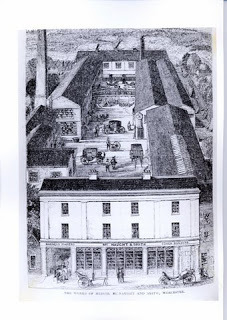 McNaught and Co., Worcester
McNaught and Co., Worcester Though from a much earlier date, Samuel Pepys records a visit to his coachmaker in his Diary: "I to my coachmaker's, and there vexed to see nothing yet done to my coach, at three in the afternoon; but I set it in doing, and stood by till eight at night, and saw the painter varnish it, which is pretty to see how every doing it over do make it more and more yellow: and it dries as fast in the sun as it can be laid on almost; and most coaches are, now-a-days, done so, and it is very pretty when laid on well, and not too pale, as some are, even to show the silver. Here I did make the workmen drink, and saw my coach cleaned and oiled; and staying among poor people there in the alley, did hear them call their fat child Punch, which pleased me mightily, that word being become a word of common use for all that is thick and short. At night home, and there find my wife hath been making herself clean against tomorrow; and late as it was, I did send my coachman and horses to fetch home the coach to-night, and so we to supper, myself most weary with walking and standing so much, to see all things fine against to-morrow, and so to bed."
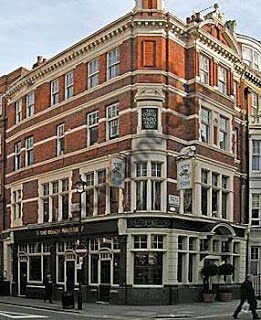 The Coachmaker Pub
The Coachmaker Pub88 Marylebone Lane, London
And in closing, Dear Reader, you will not be too surprised to find that, yet again, the fates have brought us to another encounter with the Duke of Wellington with this passage from All the Year Round - "So recently as 1837 a . . . scientific book on pleasure carriages was published by Mr. Adams, then a coachbuilder, since a distinguished mechanical engineer, and he gives no hint of the coming carriage reform. Mr. Adams made an early display of his ingenuity by building a carriage now only remembered in connexion with the great Duke of Wellington, who drove one to the last, the Equirotal, which, in theory, combined the advantage of a two-wheeled and a four-wheeled carriage, the forepart and wheels being connected with the hind body by a hinge or joint, so that no matter how the horses turned, the driver always had them square before him; a great advantage. It was also, at the cost of something under five hundred pounds, convertible into a series of vehicles. Complete, it was a landau, holding four inside, besides the servants' hind dickey; disunited, it formed at will a Stanhope gig, a cabriolet, or a curricle. In spite of the example of the Iron Duke, and the eloquent explanations of the inventor, the public, either not caring for such a combination, or not willing to pay the price, never took to the Equirotal."
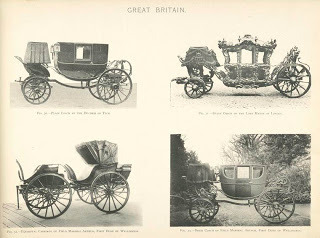 The Duke of Wellington's Equirotal
The Duke of Wellington's Equirotal carriage pictured lower left
Published on December 04, 2010 01:33
December 3, 2010
In The Garden with Kristine
 The beginnings of my garden lay in a butterfly seminar I attended, at which I bought rather a lot of plants that were meant to feed and attract the winged creatures. I had an entire, almost empty backyard at my disposal, with only a lawn, a fence and a few palm trees to work with. As if it weren't bad enough that I live in hot and humid Florida, I also live on a Cape with sandy soil, coral rock and more roots than you can shake a stick at. What these are the roots to, I've still to discover. So the first thing I had to do was rent a sod cutter and begin fashioning beds. This done, I had to dig, which returns us to the rocks and roots. If it were just a matter of digging a hole in soil, the job would be a breeze. But, it's a case of digging a bit and then tackling the roots you've uncovered. You must either cut through them or attempt to pull them out of the ground. These are not just any roots - they're downright primordial and I'm convinced that there's some poor person in China, sitting in their provincial garden in amazement as they watch their trees being inexplicably pulled backwards into the ground as I yank on the roots in my garden at the opposite Pole.
The beginnings of my garden lay in a butterfly seminar I attended, at which I bought rather a lot of plants that were meant to feed and attract the winged creatures. I had an entire, almost empty backyard at my disposal, with only a lawn, a fence and a few palm trees to work with. As if it weren't bad enough that I live in hot and humid Florida, I also live on a Cape with sandy soil, coral rock and more roots than you can shake a stick at. What these are the roots to, I've still to discover. So the first thing I had to do was rent a sod cutter and begin fashioning beds. This done, I had to dig, which returns us to the rocks and roots. If it were just a matter of digging a hole in soil, the job would be a breeze. But, it's a case of digging a bit and then tackling the roots you've uncovered. You must either cut through them or attempt to pull them out of the ground. These are not just any roots - they're downright primordial and I'm convinced that there's some poor person in China, sitting in their provincial garden in amazement as they watch their trees being inexplicably pulled backwards into the ground as I yank on the roots in my garden at the opposite Pole. However, I've finally gotten everything planted (pant, pant, pant) and the beds are beginning to fill out. Here are some "before and after" photos:




And now . . . .



Now that I've filled everything in, it's time to mulch. But things are coming along nicely, if I do say so myself, and are actually starting to flower.




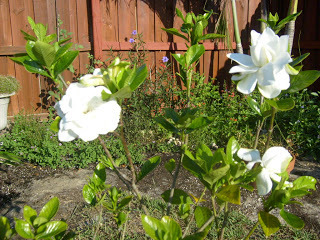
I've had the gardenia, above, for two years in a pot and it's never bloomed, so you can imagine my joy when it finally flowered this year. So, you ask - and well you might - what about the butterflies? I'm happy to say that I've got caterpillars of all kinds -
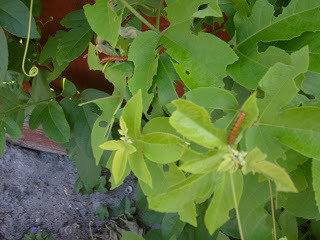
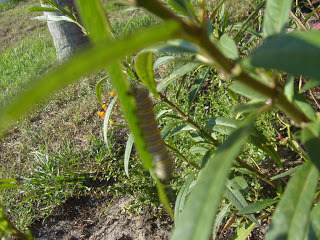
The caterpillars completely decimate the leaves on the milkweed, stripping it bare, and then attach themselves to the fence and create cocoons
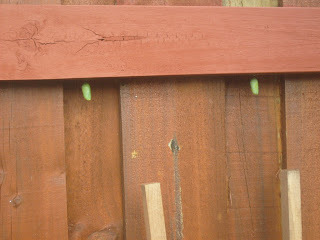
A few days later, they emerge as beautiful Monarch butterflies. Here is one newly born with the remnants of his cocoon still attached to his wing.
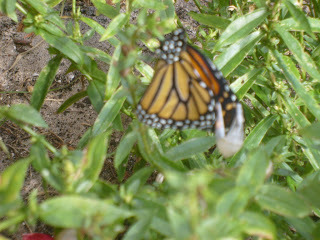
I now have Monarch, and other, butterflies galore! They flit about the garden, and my person, all day long. You should know that I didn't set out to take the butterfly photos below - they simply got in my way as I was taking the flower photos - success!
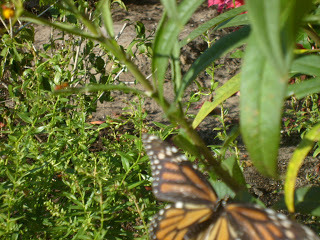
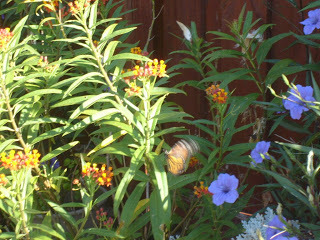
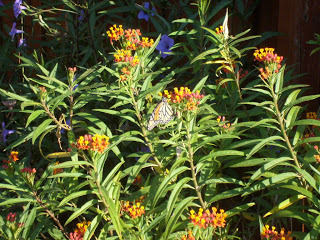

Those in colder climates, who are already feeling winter's weather, might be thinking that it's a bit odd for me to be blogging about a summer garden in December. You should know that I finished this post by adding the latest photos on November 22 - it was still in the 80's.
Published on December 03, 2010 01:31
December 2, 2010
Those Fabulous Phaetons - Part One
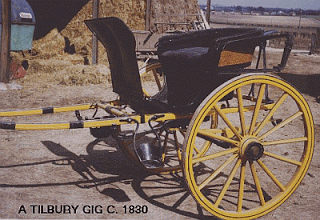
Perhaps nothing so epitomizes the reckless self indulgence of the Georgian and Regency periods as the phaeton. Fashionable phaetons used at horse shows included the Stanhope, which sported a high seat and closed back and which was named after the Honourable Fitzroy Stanhope, who designed it, and theTilbury, a light two-wheeled carriage with a spring suspension system, named after the well-known coachmaker, John Tilbury. Each cost, without harness, about seventy pounds. Tilbury was immortalized by the following lines:
"So, in St. James's, ... He pays his debts, discards his whore, No longer drives a stage and four, Nor cares what horses fill the stalls At Tilbury's or Tattersall's, Nor makes his morning lounge the stable, Nor frets all night o'er Crockford's table. ..."
(From the Moral to 'The Fox & The Rose' by Henry T. L. Ravensworth, 1833)
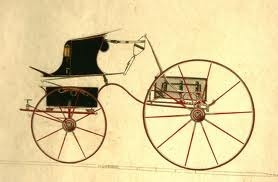 Crane-necked PhaetonThe crane-necked phaeton was a sporting vehicle of the 1780's, used for driving at high speeds and enjoyed popularity with the Prince Regent and his set, who drove them to singles, pairs or four in hand teams.It was four wheeled and had a seat for two mounted high above ground level. The most popular type had near vertical, curved iron supports, or cranes, under which were large forewheels. This unstable design was extremely dangerous, having front wheels that measured five feet in diameter and back wheels at six to eight feet in diameter. These phaetons were also called "High Flyers," a name also applied to the young bucks who drove them, racing between London and the coaching station at Salt Hill. Occasionally, reckless young ladies took the driving seat, the most notorious having been Lady Archer, who was "as renowned for her skill with the whip as for the cosmetic powers she exercised on her complexion." Jane Austen mentions in Pride and Prejudice that Lady Catherine de Bourgh sometimes drove a phaeton and has Mr. Willoughby driving a topping yellow phaeton. Austen herself drove one upon a visit to London and another to Bath. Jane recorded the last adventure thusly: "There is now something like an engagement between us and the Phaeton, which to confess my frailty I have a great desire to go out in." Next day she continued, "I am just returned from my airing in the very bewitching Phaeton and four, for which I was prepared by a note from Mr. Evelyn soon after breakfast: We went to the top of Kingsdown and had a very pleasant drive."
Crane-necked PhaetonThe crane-necked phaeton was a sporting vehicle of the 1780's, used for driving at high speeds and enjoyed popularity with the Prince Regent and his set, who drove them to singles, pairs or four in hand teams.It was four wheeled and had a seat for two mounted high above ground level. The most popular type had near vertical, curved iron supports, or cranes, under which were large forewheels. This unstable design was extremely dangerous, having front wheels that measured five feet in diameter and back wheels at six to eight feet in diameter. These phaetons were also called "High Flyers," a name also applied to the young bucks who drove them, racing between London and the coaching station at Salt Hill. Occasionally, reckless young ladies took the driving seat, the most notorious having been Lady Archer, who was "as renowned for her skill with the whip as for the cosmetic powers she exercised on her complexion." Jane Austen mentions in Pride and Prejudice that Lady Catherine de Bourgh sometimes drove a phaeton and has Mr. Willoughby driving a topping yellow phaeton. Austen herself drove one upon a visit to London and another to Bath. Jane recorded the last adventure thusly: "There is now something like an engagement between us and the Phaeton, which to confess my frailty I have a great desire to go out in." Next day she continued, "I am just returned from my airing in the very bewitching Phaeton and four, for which I was prepared by a note from Mr. Evelyn soon after breakfast: We went to the top of Kingsdown and had a very pleasant drive."
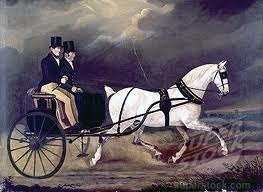 The Stanhope Gig
The Stanhope Gig A picture of a period London carriage parade is provided to us in Volume 48 of the Quarterly Review: (A man) must indeed open his eyes wide the first time he is in St. James's Street on the day of a levee or drawing-room. Hyde Park, however, on any fine afternoon, in the height of the London season, will be more than enough to confound him. He will there see what no other country under the heavens can show him, and, what is more, we may venture to add, what no other country ever will show him. Let him only sit on the rail . near our great captain's statue, with his watch in his hand, and in the space of two hours he will see a thousand well-appointed equipages pass before him to the Mall, in all the pomp of aristocratic pride, and in which the very horses themselves appear to partake. Everything he sees is peculiar:—the silent roll and easy motion of the London-built carriage—the style of the coachmen—it is hard to determine which shine brightest, the lace on their clothes, their own round faces, or their flaxen wigs—the pipe-clayed reins—pipe-clayed lest they should soil the clean white gloves—the gigantic young fellows, in huge cocked hats, bedaubed with lace, in laced silk stockings, new kid gloves, and with gold-headed canes, who tower above ' Mr. Coachman's' head— the spotted coach-dog, which has just been washed for the occasion. The vis-a-vis, containing nobody but a single fair dame, with all its set-out, has cost at least a thousand pounds;—and the stream of equipages of all calibres, barouches, chariots, cabriolets, etc., etc., etc., almost all got up, as Mr. Robius's advertisements say,' regardless of expense.'
Though phaetons were associated with single drivers, some were controlled by mounted drivers, or postilions, who rode the nearside horse and drove it's offside partner. On the Continent postilions driving a pair or team of fast horses harnessed to a light carriage were popular and driving with postilions was in the style named a la d'Aumont, the fashion having been introduced by the Duc d'Aumont.
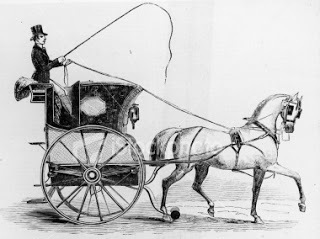
Driving from the box by a coachman was the slower but safer British method, with fast driving only coming into fashion in England during the last quarter of the 18th century when road improvements were made.
In his All the Year Round, Charles Dickens writes of these road improvements: "There can be no doubt that amongst the many remarkable social changes within the recollection of our middle-aged men, none has been more decisive than that in the character of our pleasure carriages. Macadam was the first great revolutionist in Long-acre. He made it possible to dispense with the before inevitable four horses on country roads; and by the smooth easy surface with which he replaced the jolting pavement, and the miles of mud, which, a hundred years ago, buried Arthur Young's gig on a high' way up to its axles, struck a fatal blow at the state coach with six horses, and its guard of active running footmen. The railroad followed, nipped the stage-coach just as it reached perfection, destroyed the professors of four-in-hand, and finally reduced to the value of old wood and iron those luxurious posting chariots, without which, before the days of the iron horse, no country gentleman's coach-house was complete."
Most phaetons had a rear "dummy board," a platform on which a groom or tiger stood. Owning a splendid phaeton, with their racy colours and the matched pairs of prime horseflesh and liveried servants that went along with them, offered young bucks the perfect opportunity for showing off. Strange then that the greatest self publicist of all time, Beau Brummell, never owned this nor any other carriage. He used a sedan chair and nothing could induce him to use any other vehicle when going out of an evening. Though he disliked outdoor activity of any kind, Brummell did engage a horse dealer named Fryatt purchase hunters for him.
Not only was it fashionable to own a carriage, it was expensive, as well. On top of purchase and maintenance costs, in 1814 the tax on two wheeled carriages was seventeen pounds, on four wheeled twenty one pounds. Additionally, owning a single horse brought a tax of five pounds per annum, two horses eight pounds and three horses nine pounds. Dickens explains that this tax was eventually, and cannily, gotten around: "The Chancellor of the Exchequer who reduced the tax on low-wheeled carriages was the real author of the swarms of pony phaetons that branched off and vulgarised, as the French say, the George the Fourth model - a guinea dog-cart that never carried dogs, and the thirty-inch wheel pony phaeton, were bred in the same year by the same budget. As a special boon to the agricultural public, in a chronic state of discontent, the exemption from taxation, which had previously been confined to the springless shandrydan, was extended to any two-wheeled carriage built for less than twenty pounds, provided the owner's name appeared in letters of a certain length and undefined breadth, on the cart or gig. This bounty created a huge crop of dog-carts at fabulously low prices, embellished with letters which presented the nearest approach to length without breadth. The exemption has long been repealed, but it lasted long enough to make the " cart" an institution, without which no gentleman's establishment was complete. It raised a number of ingenious adventurous wheelwrights into buildersof carts, who by degrees, when all one-horse springed vehicles were put on the same footing, advanced to better things, broke through the costly traditions of Long-acre, and displayed great ingenuity in varying the form and shape of vehicles, on two and four wheels, for town and country use. These found a place and new customers in the Crystal Palace Exhibition and at agricultural shows."
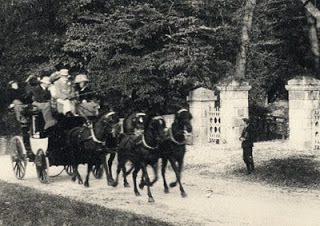
Of course, none of this concerned the members of the Four-in-Hand Club, about which Gronow said, "the spectacle of a grand turn out of the members of that distinguished body was one of the glories of the days of the Regent." Original members included Lords Sefton, Barrymore, Worcester and Fitzhardinge, Sir Henry Peyton, Sir John Lade, Major Forrester, Sir Bellingham Graham and other noted whips. They assembled in George Street, Hanover Square, and then set out for Salt Hill where a sumptuous dinner awaited them at the Windmill, kept by a man named Botham. After twenty years, the Club had broken up but it was soon revived at a meeting at Chesterfield House. Of all the members of either Club, Lords Barrymore and Lade were considered to have missed their calling - they had skill enough to have been professional drivers. Not only could they handle the reins, but they knew the slang of the road and stable. When visiting London in 1810, Simond recorded of the Club members, "the gentlemen-coachmen, with half a dozen great coats about them - immense capes - a large nosegay at the button hole - high mounted on an elevated seat - with squared elbows - a prodigious whip - beautiful horses, four in hand, drive in a file to Salthill, a place about twenty miles from London, and return, stopping on the way at the several public-houses and gin shops where stage-coachmen are in the habit of stopping for a dram, and for parcels and passengers." Simond went on to caution, "Let these gentlemen remember that the lowering of the superior classes, the fashionable imitation of the vulgar, by people of superior rank in France, under the name of Anglo-mania, was one of the things that contributed to bring about the Revolution."
Dickens tells us: "The mail phaeton of the last generation of the pre-railroad age has been reduced in size and weight, and (in the majority of instances), by the abolition of the perch, transformed into the Stanhope phaeton. It is likely to continue popular with the large number who enjoy driving, and can afford to drive, a pair of horses. The old mail phaeton, some specimens of which may still be seen driven by country bankers and masters of hounds, required a pair of full-sized expensive horses to draw it well, instead of the small blood horses which best suit a Stanhope phaeton; but it was, of its kind, a luxurious carriage, by its strength and weight defying the jolts of the worst roads, and overpowering the impudence of the drunken drivers of market-carts. Nothing less than collision with a four-wheeled waggon could shake it, while the driver, high above his horses, held them in complete command, and rolled serenely along, overlooking garden walls, and looking; down on all ordinary vehicles. In the days when roadside inns regularly expected and received a succession of guests, there was nothing pleasanter than a tour of visits to hospitable friends, in a well-appointed mail phaeton, with an agreeable companion at your side, and adorer handy groom behind. The big hood was a partial protection to the great-coated manyeaped inmates, and the blazing lamps and rattling pole chains made even a dark and foggy night so altogether disagreeable, from the comforting sensation that if anything you could not see did run against you, it was not your solid carriage that would get the worst of it."
Part Two Coming Soon!
Published on December 02, 2010 01:45
December 1, 2010
Miss Elizabeth Bennett's Inbox
Published on December 01, 2010 01:07
November 30, 2010
Favorite UK Christmas Movies
As far as we're concerned, any time is a good time to steep oneself in all things British, but Christmas is a particularly grand time to do so. While the US has produced many more, and more recent, Christmas movies, we thought we'd share some of our favorites from across the pond with you.
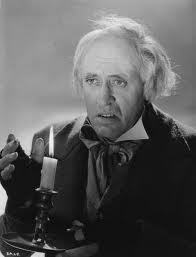
Scrooge (UK) or A Christmas Carol (US) - The 1951 Alastair Sim version remains the best version of Charles Dickens's yuletide tale. The film also features Kathleen Harrison as Mrs. Dilber, Scrooge's charwoman, and George Cole as a young Scrooge. Hermoine Baddeley plays Mrs. Cratchit. Now a Christmas staple, it was slated to premiere stateside at New York City's Radio City Music Hall, but theatre management thought the film was too grim and somber and did not possess enough family entertainment value to warrant an engagement at the Music Hall. The fact that it was filmed in black and white gives a period feel. The film stands out because of its perfect balance of dark and light, which is what Dickens intended in his ghost story of misery, terror, loneliness and redemption, all serving to draw the viewer into the authentically bleak world of London during the early Industrial Revolution. You can buy it here.
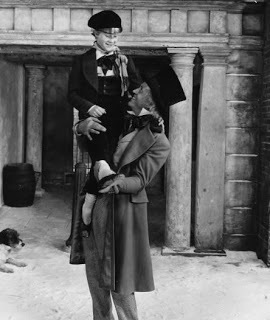
Of course, one feels honour bound to now mention Blackadder's Christmas Carol.
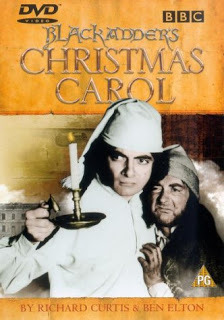
Leave it to the Blackadder crew to put their own spin on the Christmas classic. In this version, Scrooge is the nicest and most generous man going. Until the spirit of Christmas shows him the future and shows Scrooge that his goodness will play havoc upon his descendents, who will wind up as slaves. Scrooge turns mean and soon manages to offend everyone, including Queen Victoria and Prince Albert. A website called
Black Adder Hall sums up the episode thusly: "Dickens' classic tale of kindness, truth and virtue is completely mucked up and ruined by having a member of the Blackadder family involved. Stuffed with deeply horrid people (many of whom are gigantically fat) and groaning with cartloads of seasonal bottom jokes, it manages to squeeze in not only a Victorian Black Adder but also his famous Elizabethan, Regency and Space Age relatives into a huge pie of entertainment that will satisfy all but the most discriminating viewers."
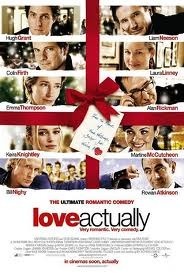
Love Actually - This feel-good movie follows the lives of eight couples in London during a frantic month before Christmas. Though vastly different, their stories are interwoven in love, lust, and luck. Everywhere you look, love is causing chaos. From the new bachelor Prime Minister who falls in love 30 seconds after entering Downing Street, to a loser sandwich delivery guy who doesn't have a hope with the girls in the UK, so heads for Wisconsin; from a jilted writer who escapes to the south of France to nurse his broken heart to an aging rock star trying to make a comeback at any price; from a bride having problems with her husband's best man to a married woman having trouble with her husband; from a schoolboy with a crush on the prettiest girl in the school to his architect step–father with a crush on Claudia Schiffer. These London lives and loves collide, mingle and finally climax on Christmas Eve with romantic, poignant and funny consequences for all. That's really all the plot line you need since the film stars Alan Rickman, Rowan Atkinson, Hugh Grant and Colin Firth and Emma Thompson. Ho, ho, ho.
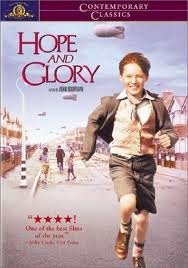
Hope and Glory - The following well written synopsis is from a website called Rotten Tomatoes - "John Boorman's 1987 epic written and directed by John Boorman (Deliverance, The General) serves as a picaresque and semi-autobiographical remembrance of a boy's coming of age during the Second World War. Exhibiting a defiant and humorous take on life during the London blitz, the family of the young boy at the center of the story (Sebastian Rice-Edwards) is a close-knit and resilient bunch, undeterred in the face of the war and reveling in each other even as they hide from the incessant bombing. To be sure, there are some poignant moments in this childhood reminiscence. The boy's mother (Sarah Miles) serves as a strong influence in the boy's life as she leads her family through this tumultuous time. The majestic sweep of the film is contrasted with so many comic moments as the people in town go about the mundane details of their daily lives yet also engage in the most absurd rituals in dealing with the onslaught of German artillery, from taking the air raids for granted to wearing gas masks at school. Boorman doesn't dwell on the horrors of war; instead he celebrates the richness and resilience of the people he remembers so fondly. An adventurous and nostalgic slice of life, Hope and Glory is a superb and memorable film." Hope and Glory is worth watching for sheer atmosphere and period detail alone. The scene where the family and their guests are gathered around the wireless in order to hear the King's Christmas speech and are urging the monarch past each stammer is priceless.
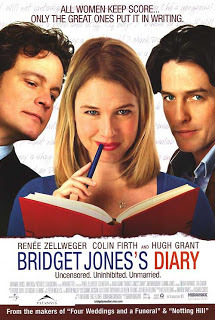
Bridget Jones's Diary - Yes, I know we watch this one all year round, but at Christmas we'll pay extra attention to Colin Firth's sweaters. Go on . . . put on your comfy pj's and I'll make the cocoa . . . . right then, pop in the disk . . . . Jeez, I can't wait till the fight scene - "Shall I bring my dueling pistol or sword?" too funny! . . . Ready? It all began on New Years day, in my 32nd year of being single. Once again I found myself on my own and going to my mother's annual turkey curry buffet. Every year she tries to fix me up with some bushy-haired, middle-aged bore and I feared this year would be no exception. . . . .
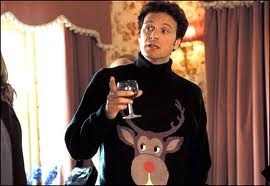
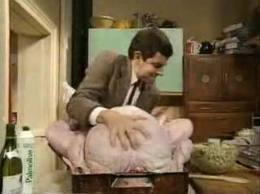
Merry Christmas Mr. Bean - O . . M . . . G . . . have you ever seen anything as funny as Mr. Bean's turkey!? Okay, we're cheating by including these as they aren't full length movies, they're episodes, but they're hysterical. You can watch the bit with the turkey here and a bit where Mr. Bean goes Christmas shopping here. Keep an eye out for Teddy!
Have we missed any of your favourite Yuletide flicks? Suggestions? Let us know.

Scrooge (UK) or A Christmas Carol (US) - The 1951 Alastair Sim version remains the best version of Charles Dickens's yuletide tale. The film also features Kathleen Harrison as Mrs. Dilber, Scrooge's charwoman, and George Cole as a young Scrooge. Hermoine Baddeley plays Mrs. Cratchit. Now a Christmas staple, it was slated to premiere stateside at New York City's Radio City Music Hall, but theatre management thought the film was too grim and somber and did not possess enough family entertainment value to warrant an engagement at the Music Hall. The fact that it was filmed in black and white gives a period feel. The film stands out because of its perfect balance of dark and light, which is what Dickens intended in his ghost story of misery, terror, loneliness and redemption, all serving to draw the viewer into the authentically bleak world of London during the early Industrial Revolution. You can buy it here.

Of course, one feels honour bound to now mention Blackadder's Christmas Carol.

Leave it to the Blackadder crew to put their own spin on the Christmas classic. In this version, Scrooge is the nicest and most generous man going. Until the spirit of Christmas shows him the future and shows Scrooge that his goodness will play havoc upon his descendents, who will wind up as slaves. Scrooge turns mean and soon manages to offend everyone, including Queen Victoria and Prince Albert. A website called
Black Adder Hall sums up the episode thusly: "Dickens' classic tale of kindness, truth and virtue is completely mucked up and ruined by having a member of the Blackadder family involved. Stuffed with deeply horrid people (many of whom are gigantically fat) and groaning with cartloads of seasonal bottom jokes, it manages to squeeze in not only a Victorian Black Adder but also his famous Elizabethan, Regency and Space Age relatives into a huge pie of entertainment that will satisfy all but the most discriminating viewers."

Love Actually - This feel-good movie follows the lives of eight couples in London during a frantic month before Christmas. Though vastly different, their stories are interwoven in love, lust, and luck. Everywhere you look, love is causing chaos. From the new bachelor Prime Minister who falls in love 30 seconds after entering Downing Street, to a loser sandwich delivery guy who doesn't have a hope with the girls in the UK, so heads for Wisconsin; from a jilted writer who escapes to the south of France to nurse his broken heart to an aging rock star trying to make a comeback at any price; from a bride having problems with her husband's best man to a married woman having trouble with her husband; from a schoolboy with a crush on the prettiest girl in the school to his architect step–father with a crush on Claudia Schiffer. These London lives and loves collide, mingle and finally climax on Christmas Eve with romantic, poignant and funny consequences for all. That's really all the plot line you need since the film stars Alan Rickman, Rowan Atkinson, Hugh Grant and Colin Firth and Emma Thompson. Ho, ho, ho.

Hope and Glory - The following well written synopsis is from a website called Rotten Tomatoes - "John Boorman's 1987 epic written and directed by John Boorman (Deliverance, The General) serves as a picaresque and semi-autobiographical remembrance of a boy's coming of age during the Second World War. Exhibiting a defiant and humorous take on life during the London blitz, the family of the young boy at the center of the story (Sebastian Rice-Edwards) is a close-knit and resilient bunch, undeterred in the face of the war and reveling in each other even as they hide from the incessant bombing. To be sure, there are some poignant moments in this childhood reminiscence. The boy's mother (Sarah Miles) serves as a strong influence in the boy's life as she leads her family through this tumultuous time. The majestic sweep of the film is contrasted with so many comic moments as the people in town go about the mundane details of their daily lives yet also engage in the most absurd rituals in dealing with the onslaught of German artillery, from taking the air raids for granted to wearing gas masks at school. Boorman doesn't dwell on the horrors of war; instead he celebrates the richness and resilience of the people he remembers so fondly. An adventurous and nostalgic slice of life, Hope and Glory is a superb and memorable film." Hope and Glory is worth watching for sheer atmosphere and period detail alone. The scene where the family and their guests are gathered around the wireless in order to hear the King's Christmas speech and are urging the monarch past each stammer is priceless.

Bridget Jones's Diary - Yes, I know we watch this one all year round, but at Christmas we'll pay extra attention to Colin Firth's sweaters. Go on . . . put on your comfy pj's and I'll make the cocoa . . . . right then, pop in the disk . . . . Jeez, I can't wait till the fight scene - "Shall I bring my dueling pistol or sword?" too funny! . . . Ready? It all began on New Years day, in my 32nd year of being single. Once again I found myself on my own and going to my mother's annual turkey curry buffet. Every year she tries to fix me up with some bushy-haired, middle-aged bore and I feared this year would be no exception. . . . .


Merry Christmas Mr. Bean - O . . M . . . G . . . have you ever seen anything as funny as Mr. Bean's turkey!? Okay, we're cheating by including these as they aren't full length movies, they're episodes, but they're hysterical. You can watch the bit with the turkey here and a bit where Mr. Bean goes Christmas shopping here. Keep an eye out for Teddy!
Have we missed any of your favourite Yuletide flicks? Suggestions? Let us know.
Published on November 30, 2010 02:07
November 29, 2010
Number Two London - by Guest Blogger Amy Myers
It is my very great pleasure to introduce you to Amy Myers, author of a Victorian mystery series featuring bandy legged chimney sweep Tom Wasp and his young apprentice, Ned. By night, the pair live in the dark and dangerous world of London's underbelly. By day, they clean upscale chimneys and meet with toffs, mayhem and murder. Click on either book title below to learn more.
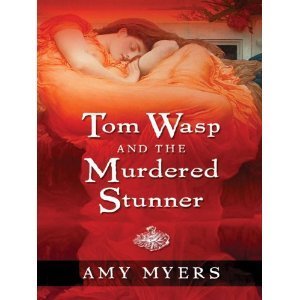
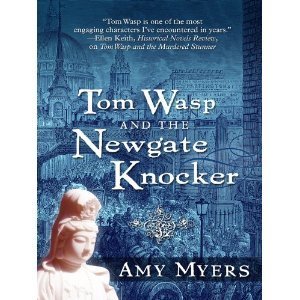
Amy's writing is a seamless and atmospheric blend of mystery, pathos, humour and historical detail that will leave you wanting more, as I did upon finishing Tom Wasp and the Murdered Stunner. This is historical fiction at its best. I was so thrilled to see the second book in the series on the shelf that I picked it up immediately, read it straight through and then got in touch with Amy to ask her to do a guest blog for us. Fortunately, she said yes.
Number Two London - by Amy Myers
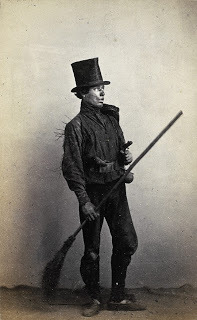
The slum home of Tom Wasp, the chimney sweep detective in my current crime novel series set in the 1860s, is a far cry from the Duke of Wellington's Number One London. My 'Number Two London' is in the East End, in an area that Charles Booth's poverty maps of the city colour dark blue and purple – the worst in London for crime and destitution. Tom and his 'chummy', his apprentice young Ned, lodge in two small rooms in Hairbrine Court, not far from the Tower of London or from the London docks. Their home is also close to the notorious Ratcliffe Highway, where in the 1860s murders and violence are everyday occurrences, as sailors flood ashore from the docks in search of drink, women and song. Twelve-year-old Ned's knowledge of the dark side of life is as great as Tom's, but they travel cheerfully onwards taking happiness if and where they can find it. In Ned's case this is often in the form of a pie from the local pie-shop, a rare treat.
Where do Tom's cases spring from? No problem. As the 'fifties TV series reminds us, there are a thousand stories in the naked city, and London can boast a great many more than that. Plots and backgrounds for crime novels are endless. A sweep can go anywhere provided there's a chimney, and Tom meets everyone from 'purefinders' (don't ask!) to the highest in the land. On the Ratcliffe Highway no splendid balls are held, but plenty of pub knees-ups; there are no glamorous West End shows, but the nearby Wilton's Music Hall is in its heyday; nor are there grand theatres to appreciate Shakespeare, only casual penny gaffs where a version of Hamlet would take twenty minutes; and no gentlemen's clubs exist, only Paddy's Goose, the most notorious criminal hang-out in London.
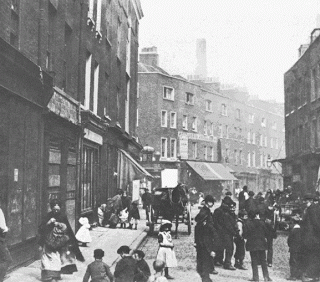
The initial idea for a new case usually stems either from my own book collection or from the London Library, a marvellous institution. Thomas Carlyle was the inspiration behind its founding in 1841, and its premises have been in St James Square since 1845. It never discards a book, and members can borrow the vast majority of the ancient tomes it treasures, together with modern books. Down in its basement lurk old books about London galore, as do bound volumes of The Times going way back to the eighteenth century.
Once the idea is established, I turn to contemporary street maps and build an image of the area that interests me. That done, I walk through the area itself, just to get the feel of it. Of course the docks are no longer in use, their buildings either demolished, turned into shopping arcades, or in the case of one Georgian warehouse on West India Quay into a superb dockland museum. Second world war bombs have flattened many of the streets that Tom Wasp knew and those that remain are greatly changed, and yet it's possible to superimpose the image of the 1860s on what one sees today. The great Hawksmoor church of St George's on the Ratcliffe Highway (now called The Highway) was reduced to a roofless ruin during the war, but its outer face can be seen today, because the new church of 1963 has been constructed within it. Modern Wapping has a high street that Tom might have recognised at least in part, especially the Thames River Police station which is still in operation, with steps down to the Thames. Sherlock Holmes knew it, and so does Tom Wasp.
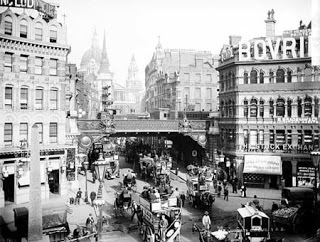
The pie shops which so sorely tempted Ned may have vanished, but in my imagination I can still see Tom plodding his gentle way along the streets around Number Two London.
Tom Wasp's full-length cases are recounted in Tom Wasp and the Newgate Knocker (Five Star, 2010, and available in audio) and its predecessor Tom Wasp and the Murdered Stunner (Five Star 2007 and audio). His short stories appear in Ellery Queen Mystery Magazine, Alfred Hitchcock Mystery Magazine and anthologies, and four have been reprinted in a collection published by Crippen and Landru, Murder 'Orrible Murder.
Please visit Amy's website here.


Amy's writing is a seamless and atmospheric blend of mystery, pathos, humour and historical detail that will leave you wanting more, as I did upon finishing Tom Wasp and the Murdered Stunner. This is historical fiction at its best. I was so thrilled to see the second book in the series on the shelf that I picked it up immediately, read it straight through and then got in touch with Amy to ask her to do a guest blog for us. Fortunately, she said yes.
Number Two London - by Amy Myers

The slum home of Tom Wasp, the chimney sweep detective in my current crime novel series set in the 1860s, is a far cry from the Duke of Wellington's Number One London. My 'Number Two London' is in the East End, in an area that Charles Booth's poverty maps of the city colour dark blue and purple – the worst in London for crime and destitution. Tom and his 'chummy', his apprentice young Ned, lodge in two small rooms in Hairbrine Court, not far from the Tower of London or from the London docks. Their home is also close to the notorious Ratcliffe Highway, where in the 1860s murders and violence are everyday occurrences, as sailors flood ashore from the docks in search of drink, women and song. Twelve-year-old Ned's knowledge of the dark side of life is as great as Tom's, but they travel cheerfully onwards taking happiness if and where they can find it. In Ned's case this is often in the form of a pie from the local pie-shop, a rare treat.
Where do Tom's cases spring from? No problem. As the 'fifties TV series reminds us, there are a thousand stories in the naked city, and London can boast a great many more than that. Plots and backgrounds for crime novels are endless. A sweep can go anywhere provided there's a chimney, and Tom meets everyone from 'purefinders' (don't ask!) to the highest in the land. On the Ratcliffe Highway no splendid balls are held, but plenty of pub knees-ups; there are no glamorous West End shows, but the nearby Wilton's Music Hall is in its heyday; nor are there grand theatres to appreciate Shakespeare, only casual penny gaffs where a version of Hamlet would take twenty minutes; and no gentlemen's clubs exist, only Paddy's Goose, the most notorious criminal hang-out in London.

The initial idea for a new case usually stems either from my own book collection or from the London Library, a marvellous institution. Thomas Carlyle was the inspiration behind its founding in 1841, and its premises have been in St James Square since 1845. It never discards a book, and members can borrow the vast majority of the ancient tomes it treasures, together with modern books. Down in its basement lurk old books about London galore, as do bound volumes of The Times going way back to the eighteenth century.
Once the idea is established, I turn to contemporary street maps and build an image of the area that interests me. That done, I walk through the area itself, just to get the feel of it. Of course the docks are no longer in use, their buildings either demolished, turned into shopping arcades, or in the case of one Georgian warehouse on West India Quay into a superb dockland museum. Second world war bombs have flattened many of the streets that Tom Wasp knew and those that remain are greatly changed, and yet it's possible to superimpose the image of the 1860s on what one sees today. The great Hawksmoor church of St George's on the Ratcliffe Highway (now called The Highway) was reduced to a roofless ruin during the war, but its outer face can be seen today, because the new church of 1963 has been constructed within it. Modern Wapping has a high street that Tom might have recognised at least in part, especially the Thames River Police station which is still in operation, with steps down to the Thames. Sherlock Holmes knew it, and so does Tom Wasp.

The pie shops which so sorely tempted Ned may have vanished, but in my imagination I can still see Tom plodding his gentle way along the streets around Number Two London.
Tom Wasp's full-length cases are recounted in Tom Wasp and the Newgate Knocker (Five Star, 2010, and available in audio) and its predecessor Tom Wasp and the Murdered Stunner (Five Star 2007 and audio). His short stories appear in Ellery Queen Mystery Magazine, Alfred Hitchcock Mystery Magazine and anthologies, and four have been reprinted in a collection published by Crippen and Landru, Murder 'Orrible Murder.
Please visit Amy's website here.
Published on November 29, 2010 01:20
November 28, 2010
The Costume Parade and Final Panel at the JASNA AGM
Victoria here with a passle of pictures from the Portland OR meeting of the Jane Austen Society of North America on Halloween weekend. Be sure to scroll down to the end to experience the piece de resistance of the final panel.
As befits the elegance of the members, a Bal Masque brought out the finest of our costumes. Below, the best of my shots (which probably isn't saying much).
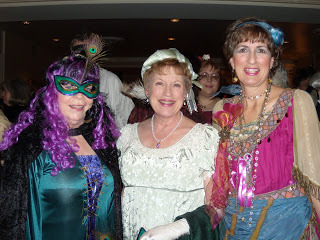
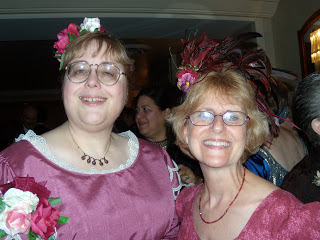
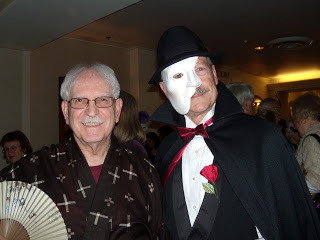
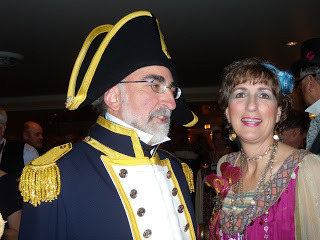
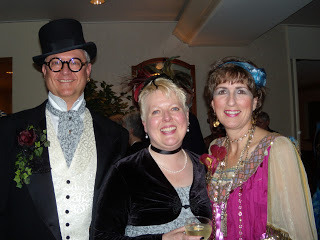
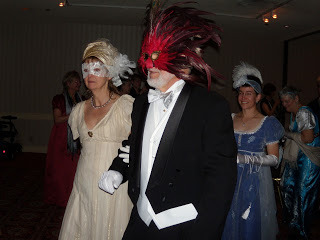
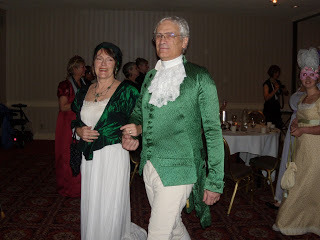
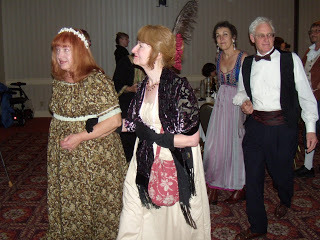
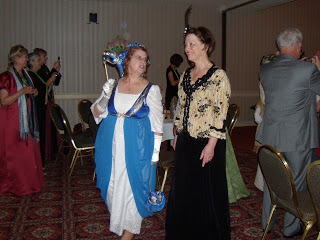
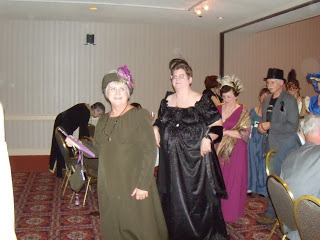
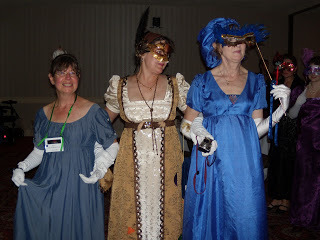
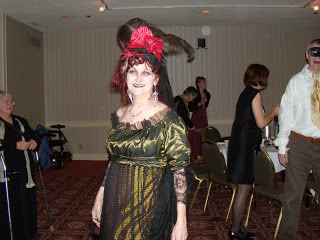
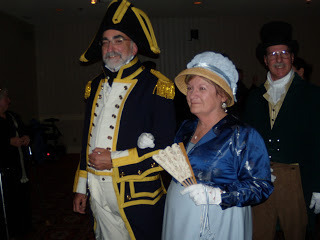
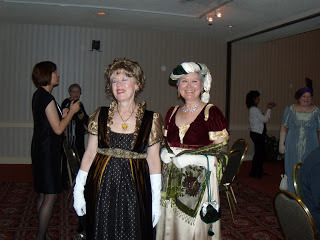
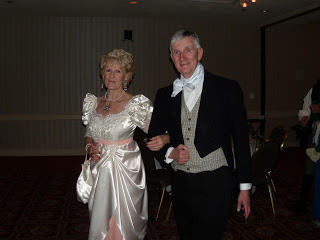
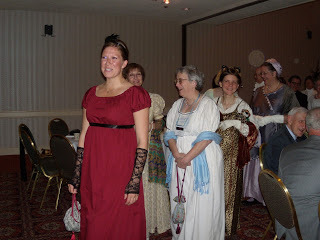
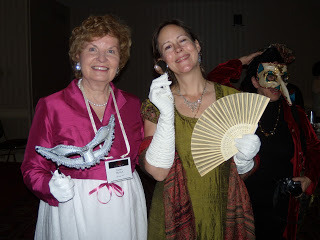
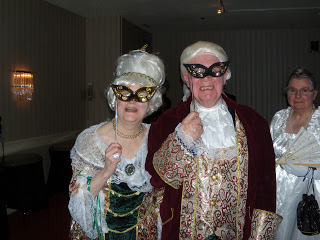
On Sunday morning, we reluctantly had to say good-bye, But we first enjoyed a lovely brunch and the final panel, "Dispute Without Mayhem," which brought us a variety of views on Northanger Abbey. But all the panelists agreed on one point: it is often under-rated!! Panelists were Diana Birchall, William Phillips and Joan Ray, all with several (often hilarious) points to make. The moderator was Kimberly Brangwin, who managed to keep the miscreants in order.
Finally, William favored us with one of his creations saying that his efforts in the poetry field were, at least in this case, limited to doggerel, which is often defined as verse for comic effect. I think he succeeded admirably.
Doggerel Abbey, by William Phillips
Posthumously published—though the first written.
By this clever spoof, we're bound to be smitten.
In early 20s, Jane started this journey—
Hell of a tribute to Radcliffe and Burney.
* * *
No heiress, no beauty, no genius, please meet
Catherine Morland, who at first, seems just – sweet!
Her mind might seem blank except for a head full
Of Gothic romance, which verges on dreadful.
As comp'ny to Bath by the Allens she's sought,
And there in the web of the Thorpes is she caught.
Cath's brother's the goal of sly Isabella.
Miss M's chased by John, a right unctuous fella.
She meets Henry Tilney – falls head over heels.
His father thinks Cathy is money on wheels.
Though unknown to Henry, her fortune's no size.
Her letch for him simply puts stars in his eyes.
He's smart and 'in charge', and though never grovels,
Shows sensitive side—knows muslin—reads novels.
Sis' Eleanor—classiest gal in the book
Builds friendship with Cath'rine that really does cook.
Henry's pizzazz makes John Thorpe just look shabby,
So C. splits and visits Northanger Abbey.
It's all misadventure – strange chest and locked room.
C. thinks the Gen'ral's a purveyor of doom!
Thorpe tells the Gen'ral, C's fortune is lacking,
So in a great snit, he sends Cathy packing.
Henry learns of this, most vexed, does not tarry,
Follows to Wiltshire and asks her to marry.
Cath'rine's parents say, "Wait! Permission's a must!"
It looks like their hopes may be dashed in the dust.
Then E. marries Viscount—pleased Gen'ral lets go.
The kids live quite well on the dead mother's dough.
* * *
The jury's been mixed—some onions—some roses.
Quite a few critics have turned up their noses.
"Rather confused," say some lit'rary sages,
But Cath'rine and we—learn lots in these pages!
© 2010 by William Phillips
Copy of William's doggerel, courtesy of AustenBlog.
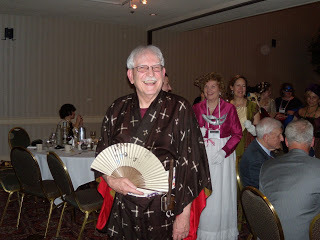 William Phillips in his Bal Masque disguise!!Thus concludes, with a grin, my coverage of the JASNA AGM of 2011 in lovely Portland, OR. Next year, Fort Worth, Texas.
William Phillips in his Bal Masque disguise!!Thus concludes, with a grin, my coverage of the JASNA AGM of 2011 in lovely Portland, OR. Next year, Fort Worth, Texas.
As befits the elegance of the members, a Bal Masque brought out the finest of our costumes. Below, the best of my shots (which probably isn't saying much).


















On Sunday morning, we reluctantly had to say good-bye, But we first enjoyed a lovely brunch and the final panel, "Dispute Without Mayhem," which brought us a variety of views on Northanger Abbey. But all the panelists agreed on one point: it is often under-rated!! Panelists were Diana Birchall, William Phillips and Joan Ray, all with several (often hilarious) points to make. The moderator was Kimberly Brangwin, who managed to keep the miscreants in order.
Finally, William favored us with one of his creations saying that his efforts in the poetry field were, at least in this case, limited to doggerel, which is often defined as verse for comic effect. I think he succeeded admirably.
Doggerel Abbey, by William Phillips
Posthumously published—though the first written.
By this clever spoof, we're bound to be smitten.
In early 20s, Jane started this journey—
Hell of a tribute to Radcliffe and Burney.
* * *
No heiress, no beauty, no genius, please meet
Catherine Morland, who at first, seems just – sweet!
Her mind might seem blank except for a head full
Of Gothic romance, which verges on dreadful.
As comp'ny to Bath by the Allens she's sought,
And there in the web of the Thorpes is she caught.
Cath's brother's the goal of sly Isabella.
Miss M's chased by John, a right unctuous fella.
She meets Henry Tilney – falls head over heels.
His father thinks Cathy is money on wheels.
Though unknown to Henry, her fortune's no size.
Her letch for him simply puts stars in his eyes.
He's smart and 'in charge', and though never grovels,
Shows sensitive side—knows muslin—reads novels.
Sis' Eleanor—classiest gal in the book
Builds friendship with Cath'rine that really does cook.
Henry's pizzazz makes John Thorpe just look shabby,
So C. splits and visits Northanger Abbey.
It's all misadventure – strange chest and locked room.
C. thinks the Gen'ral's a purveyor of doom!
Thorpe tells the Gen'ral, C's fortune is lacking,
So in a great snit, he sends Cathy packing.
Henry learns of this, most vexed, does not tarry,
Follows to Wiltshire and asks her to marry.
Cath'rine's parents say, "Wait! Permission's a must!"
It looks like their hopes may be dashed in the dust.
Then E. marries Viscount—pleased Gen'ral lets go.
The kids live quite well on the dead mother's dough.
* * *
The jury's been mixed—some onions—some roses.
Quite a few critics have turned up their noses.
"Rather confused," say some lit'rary sages,
But Cath'rine and we—learn lots in these pages!
© 2010 by William Phillips
Copy of William's doggerel, courtesy of AustenBlog.
 William Phillips in his Bal Masque disguise!!Thus concludes, with a grin, my coverage of the JASNA AGM of 2011 in lovely Portland, OR. Next year, Fort Worth, Texas.
William Phillips in his Bal Masque disguise!!Thus concludes, with a grin, my coverage of the JASNA AGM of 2011 in lovely Portland, OR. Next year, Fort Worth, Texas.
Published on November 28, 2010 01:55
November 27, 2010
Sotheby's to Auction the Duchess of Windsor's Jewels - Again
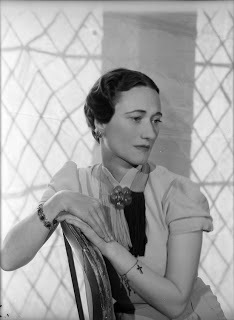
Twenty-three years after the legendary auction of the "Jewels of the Duchess of Windsor" - still the most valuable single-owner jewelry collection ever sold - Sotheby's will offer 20 pieces for sale in London on Nov. 30, 2010 that include renowned examples formerly owned by the Duchess of Windsor and King Edward VIII. An unidentified owner is selling the items, which were acquired at the Sotheby's sale in Geneva in April 1987.
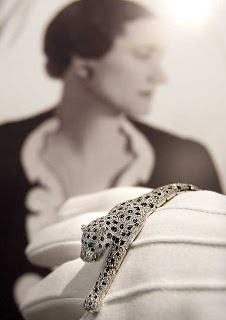
Eleven Cartier pieces are included in the new sale. Among these is an onyx-and-diamond bracelet designed, with the Duke's encouragement, in the form of a panther by Jeanne Toussaint for Cartier in 1952. This is expected to sell for between $1.5 million and 2.3 million pounds, as is a flamingo-shaped brooch by Toussaint that the Duchess bought in 1940.
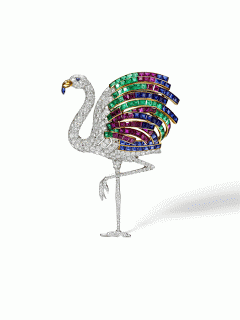
David Bennett, chairman of Sotheby's Jewelry in Europe and the Middle East, said: "The offering comprises not only incomparable examples of the genius of Cartier in collaboration with the Windsors, but also pieces whose inscriptions tell the story of perhaps the greatest love story of the 20th century, the romance that led Edward VIII to abdicate the throne of Great Britain." A few of the other pieces offered in the upcoming auction include:
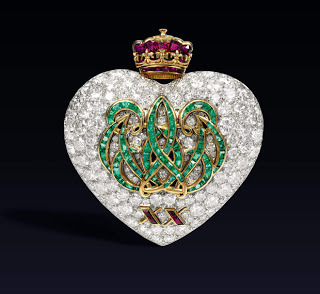
A Cartier heart-shaped emerald, ruby and diamond brooch, with the initials W.E. (Wallis, Edward) done in emeralds and a pair of X's in blood red rubies -commissioned in 1957 to mark their 20th wedding anniversary.
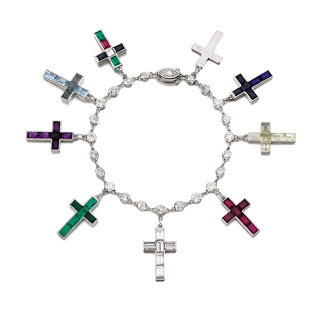 A diamond bracelet set with nine jewelled crosses is one of the most famous and personal of all the Duchess's jewels. On the back of each cross is an inscription commemorating a significant event in the lives of the couple. Most of the crosses date from the 1930s, but two, one set with amethyst and one set with yellow sapphires, commemorate Wallis's appendectomy and her recovery from it in 1944. The sapphire and diamond cross is inscribed "Our marriage cross Wallis 3.VI.37," while the aquamarine cross refers to an attempt on the King's life with the inscription "God save the King for Wallis 16.VII.36." The sapphire cross was given to Wallis to commemorate Edward's 41st birthday in 1935. The emerald cross is called the X Ray cross and marks the day that the Duchess had an X-ray taken. The ruby cross commemorates a vacation in Austria in 1935. The platinum cross is inscribed "WE are too" and is dated 25 November 1934, a few days before the marriage of Edward's favourite brother, George Duke of Kent, to Princess Marina of Greece. The diamond cross, inscribed "The Kings Cross God Bless WE" and dated 1 March 1936, commemorates a time when Wallis was visiting France and when, during her absence, Edward VIII and Mr Simpson discussed the future of the King's relationship with Wallis while Edward agreed to be faithful to her if her husband agreed to a divorce. The Duchess can be seen wearing this bracelet in the photo at the top of this post.
A diamond bracelet set with nine jewelled crosses is one of the most famous and personal of all the Duchess's jewels. On the back of each cross is an inscription commemorating a significant event in the lives of the couple. Most of the crosses date from the 1930s, but two, one set with amethyst and one set with yellow sapphires, commemorate Wallis's appendectomy and her recovery from it in 1944. The sapphire and diamond cross is inscribed "Our marriage cross Wallis 3.VI.37," while the aquamarine cross refers to an attempt on the King's life with the inscription "God save the King for Wallis 16.VII.36." The sapphire cross was given to Wallis to commemorate Edward's 41st birthday in 1935. The emerald cross is called the X Ray cross and marks the day that the Duchess had an X-ray taken. The ruby cross commemorates a vacation in Austria in 1935. The platinum cross is inscribed "WE are too" and is dated 25 November 1934, a few days before the marriage of Edward's favourite brother, George Duke of Kent, to Princess Marina of Greece. The diamond cross, inscribed "The Kings Cross God Bless WE" and dated 1 March 1936, commemorates a time when Wallis was visiting France and when, during her absence, Edward VIII and Mr Simpson discussed the future of the King's relationship with Wallis while Edward agreed to be faithful to her if her husband agreed to a divorce. The Duchess can be seen wearing this bracelet in the photo at the top of this post. 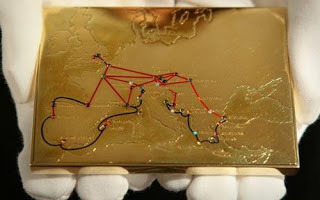
Also going on sale is a gold cigarette case decorated with a map of Europe showing the routes travelled by Edward and Mrs Simpson in the 1930s; the routes are enamelled and the destinations are marked with diamonds and cabochon gems. The inscription shows that this was a Christmas present from Edward to Wallis in 1935.
You can watch video from the 1987 Sotheby's auction and access the sale catalogue here.
Published on November 27, 2010 01:42
Kristine Hughes's Blog
- Kristine Hughes's profile
- 6 followers
Kristine Hughes isn't a Goodreads Author
(yet),
but they
do have a blog,
so here are some recent posts imported from
their feed.


